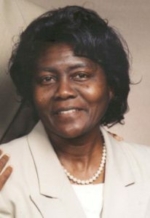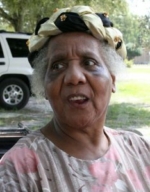Sources of Black History at the Archives
Orange Park Normal School
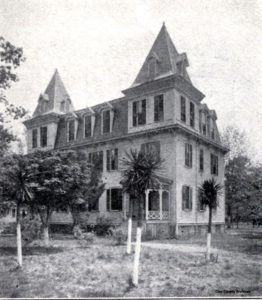
- An integrated school prior to desegregation.
- Orange Park Hand School Source Documents
- Graduates
- Arrest Warrant Paper: “The Hand School,” by Faye Irwin.
Information was filed against one of the teachers at the Orange Park Normal School. These original documents are available in the Archives.
The Freedmen’s Bureau at Magnolia
The Freedmen’s bureau served as an orphanage for black children from all over the Jacksonville area. It was called an asylum, but served as an orphanage and hospital. Various extant records of the Freemen’s Bureau are available in subject files at the Archives. A description of its activities is in Parade of Memories, pg 114.
The Goldmine of Names
The Goldmine of Names contains more than 50,000 entries which refer to the records of people in Clay County before about 1920. Volunteers are happy to help you with some custom searches if you are having difficulty.
Historical Papers
- Dunbar High School History – Article by Eugene Francis
- History of the First African Missionary Baptist Church by Vishi Garig
- Dr. Schaefer’s online history of Civil War Colored Infantry troops in Florida
Oral Histories

A Selection of Records available at the Archives
- Extant Collection of Slave Documents from probate files and other sources
- African-American census 1860 of Clay County
- Free blacks in East Florida 1794-1820
- Black burials in Green Cove Springs through 1939
- Mt. Olive Cemetery records
- African-American Obituaries in Clay County
- First territorial survey of the McIntosh plantation at Laurel Grove — perhaps showing slave quarters
- Tutson Testimony further outlined in Parade of Memories, pg 101
- The Civilian Conservation Corp records indicate that Companies 416 and 418 (both African-American unites) worked in Clay County.
Historical Figures
Dr. Louise” LuLu” Cecilia Fleming
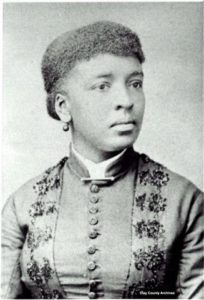 (1862-1899) was born to slave parents on Fleming Island in 1862. Her father was a mixed-race man named David Fleming. Lulu grew up on Hibernia Plantation before its white owners had to free her. She was baptized at the Bethel Baptist Institutional Church in Jacksonville at age 14, trained to become a teacher, taught in St. Augustine, attended Shaw University in North Carolina, and graduated as valedictorian.
(1862-1899) was born to slave parents on Fleming Island in 1862. Her father was a mixed-race man named David Fleming. Lulu grew up on Hibernia Plantation before its white owners had to free her. She was baptized at the Bethel Baptist Institutional Church in Jacksonville at age 14, trained to become a teacher, taught in St. Augustine, attended Shaw University in North Carolina, and graduated as valedictorian.
In 1886, she became the first African American woman appointed as a foreign missionary and assigned to the Congo, Africa. Afterward, she returned to America and attended medical school at The Women’s Medical College at Philadelphia, from which she graduated in 1895. Once again, she returned to Africa to work as the first female African-American doctor sent as a missionary to Africa. She served there only four years before contracting African sleeping sickness and dying back in Philadelphia.
Savage, Augusta Fells
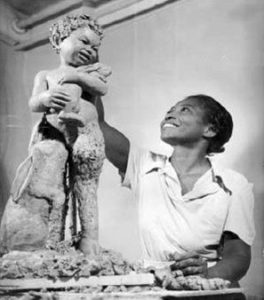 Augusta Savage was determined since childhood to become a sculptor. She was born in Green Cove Springs, Florida to a father who worked in the local brickyard and a mother who was a laundress. She used local clay to create her first works of art. Augusta Savage moved to New York City in the early 1920s to study at Cooper Union’s School of Art. She quickly became one of the most influential artists in the Harlem Renaissance. She sculpted the likenesses of many other African-American leaders, including Marcus Garvey and. scholar W. E. B. Du Bois.
Augusta Savage was determined since childhood to become a sculptor. She was born in Green Cove Springs, Florida to a father who worked in the local brickyard and a mother who was a laundress. She used local clay to create her first works of art. Augusta Savage moved to New York City in the early 1920s to study at Cooper Union’s School of Art. She quickly became one of the most influential artists in the Harlem Renaissance. She sculpted the likenesses of many other African-American leaders, including Marcus Garvey and. scholar W. E. B. Du Bois.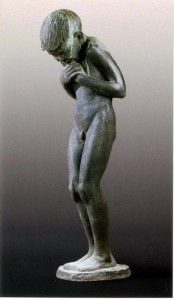
In 1924 Savage sculpted a plaster bust of her nephew and called the piece Gamin (French for “street urchin”). It won Savage a Julius Rosenwald Fellowship and a year’s study in Paris. She had been previously denied an opportunity to study abroad because of her skin color.
She returned to Harlem and began teaching aspiring artists. In 1932 she established the Savage Studio of Arts and Crafts, an arts-education center for adults. She later became the first director of Harlem’s Community Arts Center (a WPA project). In 1939, Savage was commissioned to create a sculpture for the New York World’s Fair. “The Harp” was inspired by James Weldon Johnson’s 1900 song, “Lift Every Voice and Sing.” Savage knew Johnson from her short stay in Jacksonville, Florida, on the way to New York.
Hurston, Zora Neil
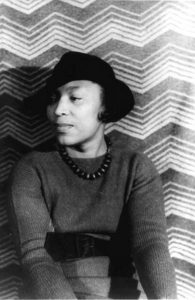 Writer
Writer
Vanessa Williams narrated her life story, which is available in the Archives.
Richard Norman and Norman Studios
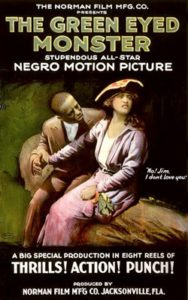 Richard Norman (1891-1960) was born in Middleburg and went on to found “Norman Studios.” He had an early understanding that there was a niche market for films starring black actors and for black audiences. His Norman Studios, in Jacksonville, was among the first silent film producers.
Richard Norman (1891-1960) was born in Middleburg and went on to found “Norman Studios.” He had an early understanding that there was a niche market for films starring black actors and for black audiences. His Norman Studios, in Jacksonville, was among the first silent film producers.


